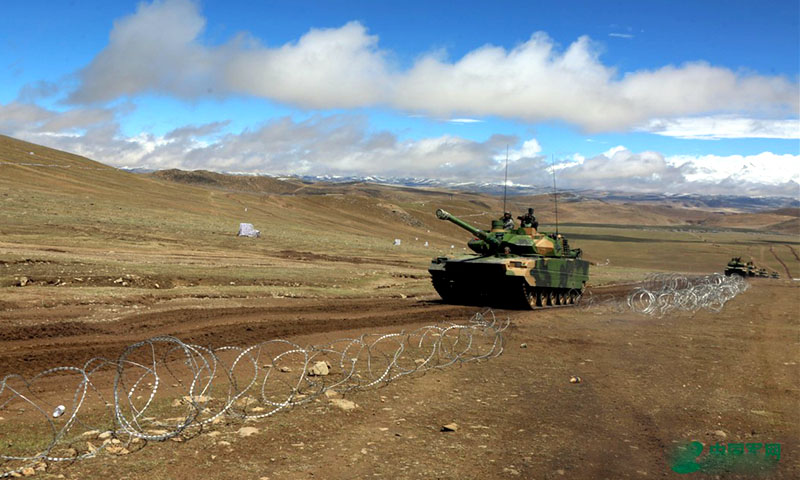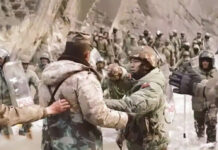
(TibetanReview.net, Jun15’20) – In yet another indication that it is preparing for conflict even as talks continued over the Ladakh border dispute with India, China said an infantry battalion of its People’s Liberation Army (PLA) Tibet Military Region recently organized infantry-tank cooperation drills at an undisclosed location at an elevation of more than 4,700 meters, putting the troops’ teamwork and rapid-response capabilities to a comprehensive test.
Participating in the drills were the PLA’s Type 15 lightweight tanks which had significant advantages over other types of tanks or armored vehicles in such regions, reported the official globaltimes.cn Jun 14, citing a statement released by the PLA Tibet Military Region Jun 14.
Type 15 is China’s latest type of lightweight main battle tank and it made its public debut at the National Day military parade on Oct 1, 2019 in Beijing.
The report described the Type 15 lightweight tank as highly mobile even on plateaus, “a type of terrain which heavy tanks can struggle in due to the lack of oxygen to support the engine.” It said “any lesser armored vehicle that can operate on plateaus are no threat to the Type 15.”
This means that the Type 15 is basically unrivalled on plateaus, the report cited a military expert as saying under the condition of anonymity.
The report said that in another development, Type 99 main battle tanks attached to a brigade under the PLA 76th Group Army participated in separate exercises in mountainous plateau terrain on Jun 4, citing China Military Online Jun 11.
The report described the much heavier Type 99 tanks, which had even stronger firepower and protection, as a complement to the Type 15 tanks.
And the report made it a point to cite a source as saying Jun 12 that Chinese and Indian border troops were conducting multi-level meetings on the ground to promote the implementation of a high-level consensus and resolve differences on the frontline.





